Wood Hub: WELL Pre-Test (Indoor Air and Water Quality)
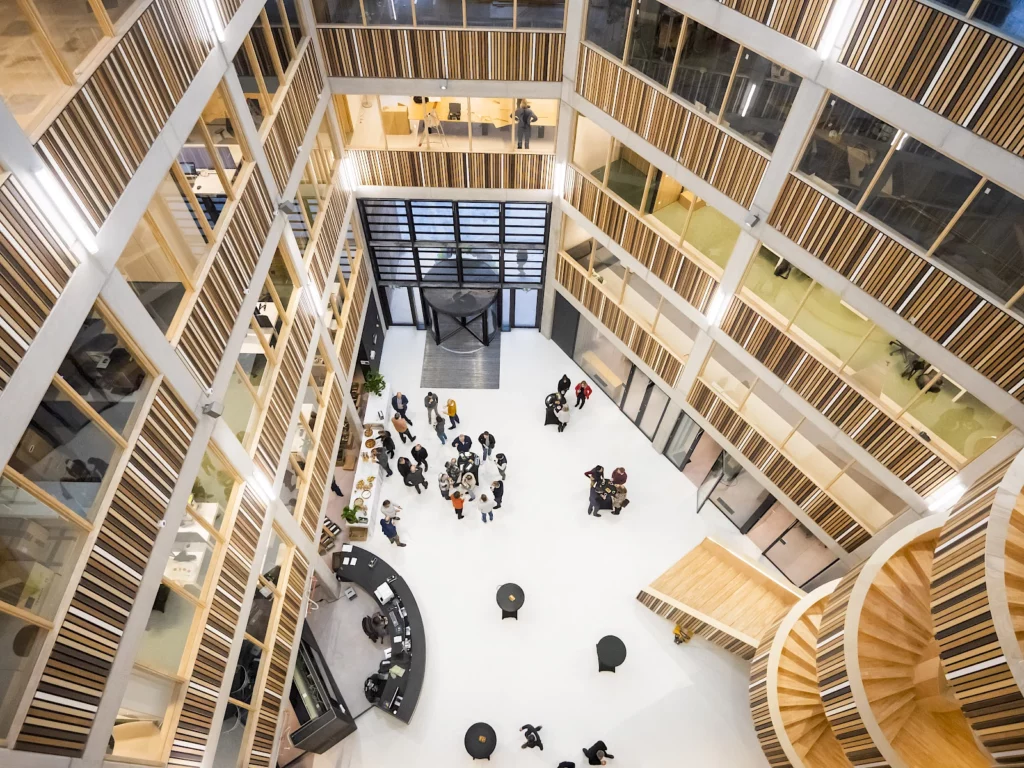
Scope
Airscan was mandated by BPI to assess indoor air quality conditions and water quality in the Wood Hub building prior to the WELL certification (WELL pre-test). The results of this pre-testing will be used by the project team as input for the upcoming actual WELL certification of the building.
The pre-test included measurements of indoor air pollution (inorganic and organic gasses as well as particulate matter concentrations were measured) and water quality assessment (microbiological, physical and chemical composition was assessed).
The results of the performed pre-test analysis showed that all the tested parameters including air and water tests meet the corresponding threshold limits. Thus, the building is ready for the actual WELL certification and can gain full points in the Air and Water sections.
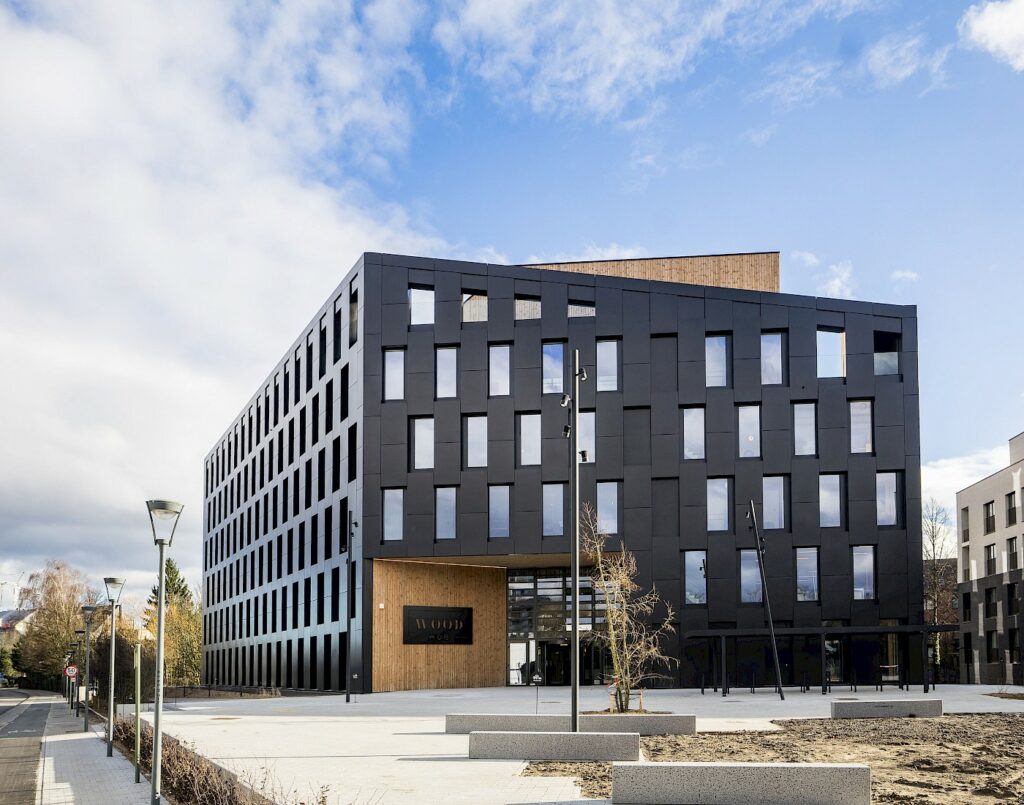
Project Overview
Airscan, in collaboration with BPI, was mandated to assess indoor air and water quality conditions in the Wood Hubbuilding, located at Av. Herrmann-Debroux 42, 1160 Brussels, as part of the pre-testing phase for WELL certification. The sampling campaign, jointly developed by Airscan and BPI, included the following tests:
- Water Quality Testing
All tests were conducted in alignment with WELL certification guidelines. The results from this pre-assessment have been provided to the project’s WELL Accredited Professional (WELL AP) for the subsequent phase of evaluation.
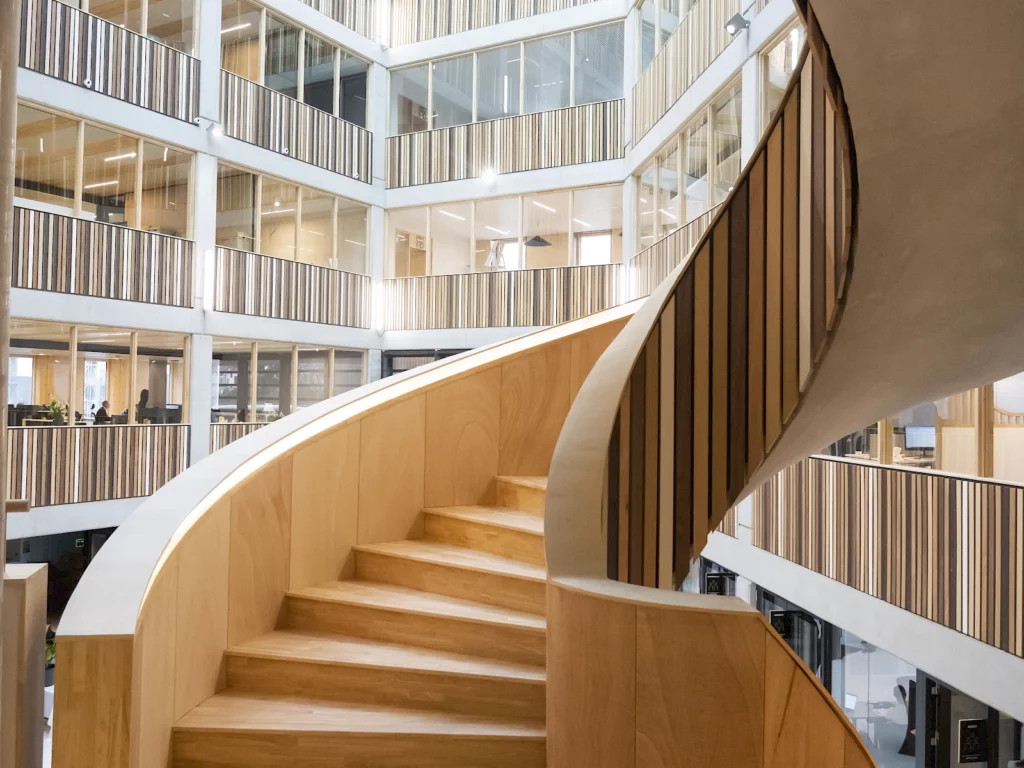
Methods
Both air quality and water tests were conducted aligned with the WELL certification requirements.
Air Quality monitoring loggers (PM2.5, PM10, CO, NO2 and O3)
The measuring stations used by Airscan are those of the manufacturer Ethera-Labs, model NEMo diagnosis. This is a professional air quality measuring equipment which is also used for regulatory testing in France. The device has an internal memory that can store up to 50,000 measurements. The station has an internal 5000 mAh battery, motherboard, and measurement sensors. The measurement frequency was set to 60 seconds. The total sampling duration was 1 hour as recommended in the performance verification guidebook (10 minutes stabilisation period followed up by 50 minutes of sampling).
Active Sampling of Volatile Organic Compounds
Also, the air quality test included measuring aldehydes and TVOCs through active sampling. Formaldehyde and Acetaldehyde concentrations were measured according to ISO 16000-3 (Formaldehyde and other carbonyls in air by active sampling) method. The concentration of total volatile organic compounds was assessed using ISO 16000-6methods.
Water testing
The water samples were collected by the Airscan team following the WELL performance verification guidebook. The instructions for the sampling are as follows:
- Run the water for at least 30 seconds before gathering a water sample (unless the sample is drawn immediately following a previous sample).
- Immediately after the collection phase, the samples were shipped to the partner laboratory using 24-hour delivery.
- The samples collected were shipped andcompany and therefore a new sampling will be performed on 11/01/2024. The results of this report will be updated upon receiving the results from the partner laboratory (±2 weeks from the sampling date).
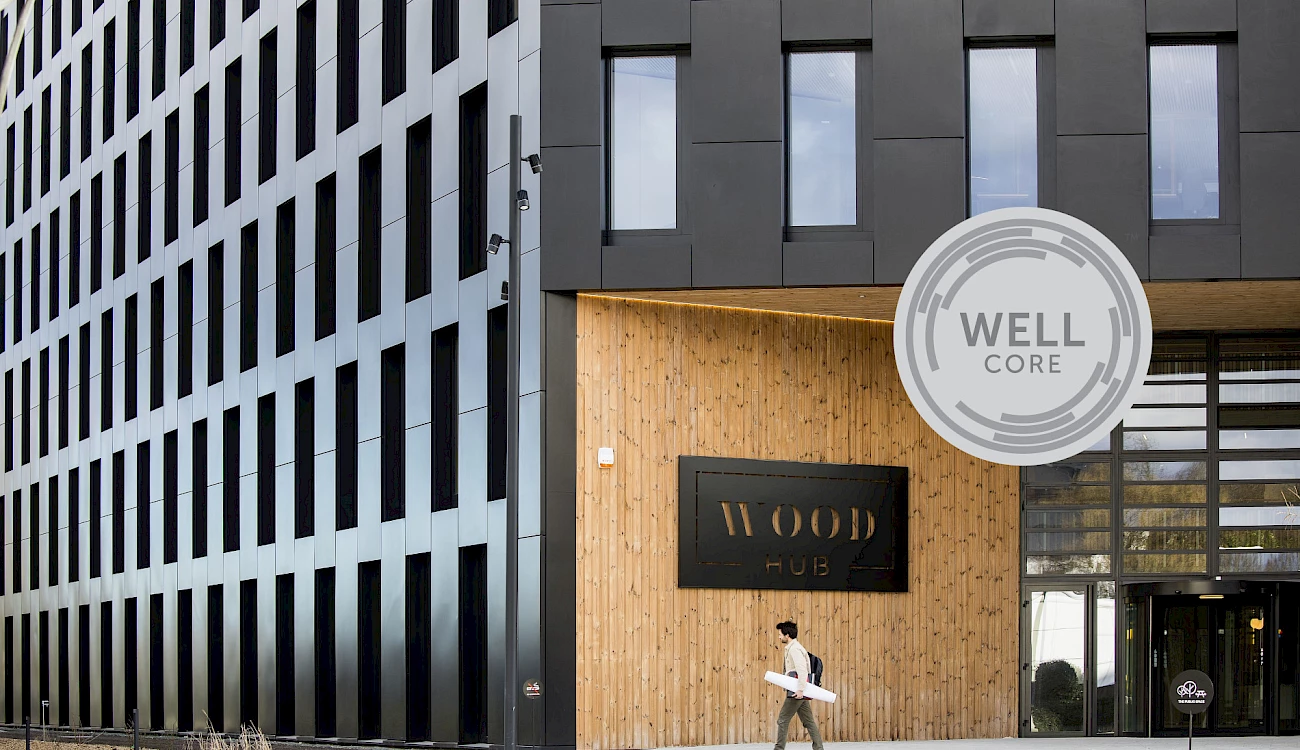
Results
The WELL pre-testing assessment showed that the Wood Hub building is ready to pass the air quality tests described in the WELL Building Standard Guidebook. Both volatile organic compounds, particulate matter, and gaseous pollutants measured during the pre-testing met the corresponding limits. Moreover, the preliminary test showed that the building can gain 2 extra points in the A05 section as the PM2.5 and PM10 concentrations are very low in the building.
Despite the fact, that all the results were well below the limit, Airscan proposes to implement the following “quick-wins” actions to ensure the repeatability of the results during the actual WELL certification assessment:
- Inspect ventilation system filters and replace them if necessary to guarantee a sufficient air exchange rate and optimal indoor air quality conditions
- Air flush out using the maximum air flow rate that can be generated by the ventilation system installed in the building. An air flush or building flush is a technique whereby air is forced through a building after construction and before occupancy to remove or reduce pollutants, such as VOCs and particulate matter, inadvertently introduced indoors during construction. Also, this procedure will allow you to gain extra points and add another feature to the project scorecard during the WELL certification.
- During the site visit and sampling, the Airscan team observed that minor construction activities are still taking place around the building premises. Airscan, recommends stopping all construction-related activities at least 1 week before the on-site assessment to minimize risks of air pollution.
- Analysis of the water samples collected from 2 different taps in the building showed good results with all parameters meeting the corresponding threshold limits. Thus, the project can gain points in the Water section of the WELL certification.
Interested in a similar solution?
Latest Articles

School air quality: protect children today | Airscan
Children are more vulnerable to air pollution at school. Key Brussels data, effective measures (school streets, LEZ), and Airscan solutions: monitoring, smart ventilation, certification‑ready reporting.
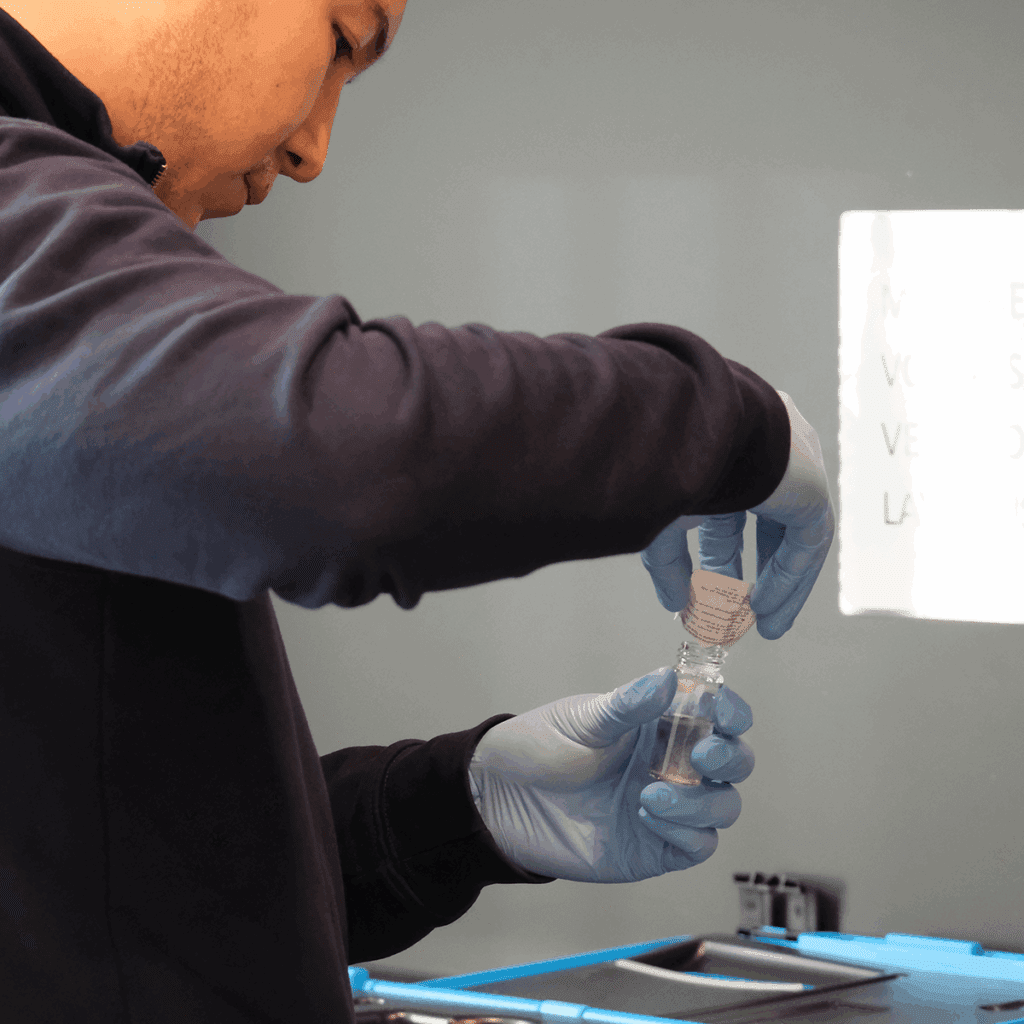
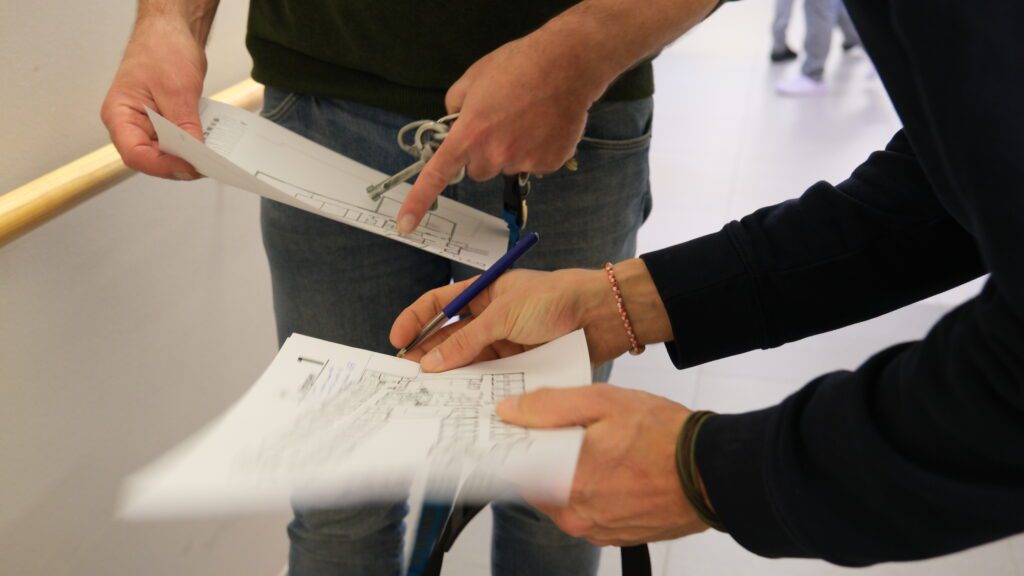
Ventilation Audits in Flanders Care Homes: Airscan’s 40‑Site Study on Indoor Air Quality
Airscan’s audit of 40 Flemish care homes uncovered critical ventilation issues: nearly 1 in 4 rooms exceeded safe CO₂ limits. With VEB and VIPA support, the study offers data-driven solutions to protect residents’ health.
